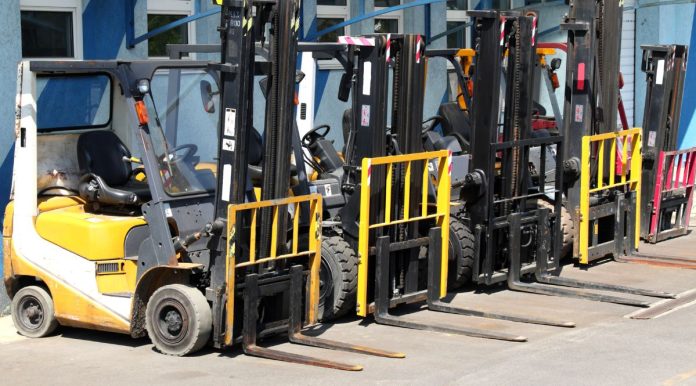Forklifts are used in warehouses, construction sites and manufacturing facilities to move heavy loads efficiently. But operating a forklift comes with risks. To ensure forklift safety, both operators and employees must follow the rules. Gwent Mechanical Handling, a trusted provider of forklifts and lifting equipment, emphasises the importance of these guidelines to prevent accidents and ensure smooth operations.
Here are the 5 golden rules of forklifts that every operator should know to prevent accidents and use the equipment safely.
How to Operate Forklifts
1. Get Proper Training and Certification
Before operating a forklift, every forklift operator must get trained and certified. Proper training gives operators the knowledge of the machine, from basic operations to emergency response. Forklift accidents are often due to lack of training or not knowing forklift safety guidelines. Certification and training also highlights site specific rules so operators can drive and lift safely, handle loads correctly and avoid risky practices.
2. Pre-Shift Inspection
A forklift must be checked before each shift to ensure it’s in good working condition. Pre-shift checks should cover critical areas such as seatbelt, fuel level, forks, brakes and other equipment. Check for visible damage to forks, hydraulics and load capacity indicators. Regular checks reduces the risk of mechanical failure during operation and helps to identify issues early on and prevent accidents.
3. Wear Your Seatbelt
Just like in any vehicle, wearing a seatbelt is crucial for forklift operators. A seatbelt prevents the driver from being thrown out in case of sudden stop or accident which can cause serious injury. Many forklift accidents are due to operators not wearing their seatbelts especially in situations where the forklift might tip over due to uneven loads or high speeds. It’s a simple yet effective safety measure that all operators must follow.
4. Know Your Load Limits and Stability
Forklifts have load limits and exceeding them will tip over. The operator must always know the machine’s maximum load capacity and how it changes with height and weight distribution. Know the centre of gravity, how to position loads and avoid high speed manoeuvres. When driving up or down a ramp extra caution is needed to prevent loads from shifting which could destabilise the forklift and cause an accident.
5. Know Your Environment and Other Employees
Awareness is the key to prevention. Forklift operators should always be aware of their surroundings, other employees, obstacles and equipment on site. Use signals and alarms to alert others in the area especially in high traffic zones where visibility is limited. Drive slow and careful, maintain a safe speed and watch out for hazards on the ground. By being alert operators can protect themselves, their colleagues and the equipment.
Conclusion
These 5 golden rules is the foundation for safe forklift operation. By getting trained, do pre-shift checks, wear seatbelt, follow load limits and be aware of your surroundings forklift operators can reduce risks and have a safer workplace. Forklifts are powerful machines and following these safety guidelines can prevent accidents, injuries and damage to loads, equipment and the site.
When it comes to operating forklifts, safety always comes first.







